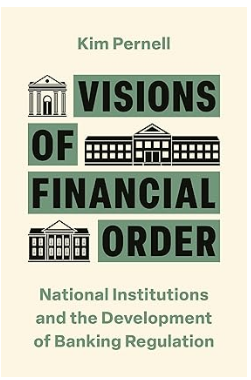 ● On The Edge: The Art of Risking Everything
● On The Edge: The Art of Risking Everything
Nate Silver
Review via AP
By the time you finish Nate Silver’s new book, you’ll probably want to do something risky.
Not for the sake of adrenaline or to the point of being reckless, but because you might be convinced that the occasional gamble — more than most people are comfortable with — is worth it.
In “On the Edge: The Art of Risking Everything,” Silver compellingly theorizes that humans are in general too risk averse, and that those who can discerningly fight that impulse often benefit greatly in life.
 ● Economic Myths and Economic Realities: Five Mistakes We Are Told Every Single Day, And The Real Sources Of Economic Growth
● Economic Myths and Economic Realities: Five Mistakes We Are Told Every Single Day, And The Real Sources Of Economic Growth
Jorge Sá and Paulo Rodrigues
Summary via publisher (Austin Macauley)
The world’s ten richest countries have about 60 times the income per capita of the bottom ten. Nobel Prize-winning economists have acknowledged their ignorance regarding the sources of economic growth. This explains why, despite considerable financial assistance, the gap between poorer and richer countries has grown year after year, both globally and within countries like the USA and Europe. Using straightforward statistical diagrams, this book explains approximately 90% of the variance in income among countries or states. The lessons are twofold: First, nothing is more pointless than perfecting the irrelevant. Second, there are no underdeveloped countries, only undermanaged ones (P. Drucker). The wealthiest countries are, overall, the best-run companies.
 ● Central Bank Capitalism: Monetary Policy in Times of Crisis
● Central Bank Capitalism: Monetary Policy in Times of Crisis
Joscha Wullweber
Excerpt via publisher (Stanford U. Press)
Calls for central banks to intervene to control rising prices are based on the hope of returning inflation to tolerable levels. Central bank intervention, however, comes at a huge price. To produce the intended effect, the increase in key interest rates must be high enough to slow down investments and the overall economy. As a result, fewer jobs are created, less people are hired, and more employees become redundant. This can lead to an economic recession, or even worse a recession accompanied by high inflation; in other words, stagflation (IMF 2022).
 ● Visions of Financial Order: National Institutions and the Development of Banking Regulation
● Visions of Financial Order: National Institutions and the Development of Banking Regulation
Kim Pernell
Summary via publisher (Princeton U. Press)
The global financial crisis of the late 2000s was marked by the failure of regulators to rein in risk-taking by banks. And yet regulatory issues varied from country to country, with some national financial regulatory systems proving more effective than others. In Visions of Financial Order, Kim Pernell traces the emergence of important national differences in financial regulation in the decades leading up to the crisis. To do so, she examines the cases of the United States, Canada, and Spain—three countries that subscribed to the same transnational regulatory framework (the Basel Capital Accord) but developed different regulatory policies in areas that would directly affect bank performance during the financial crisis.
Please note that the links to books above are affiliate links with Amazon.com and James Picerno (a.k.a. The Capital Spectator) earns money if you buy one of the titles listed. Also note that you will not pay extra for a book even though it generates revenue for The Capital Spectator. By purchasing books through this site, you provide support for The Capital Spectator’s free content. Thank you!